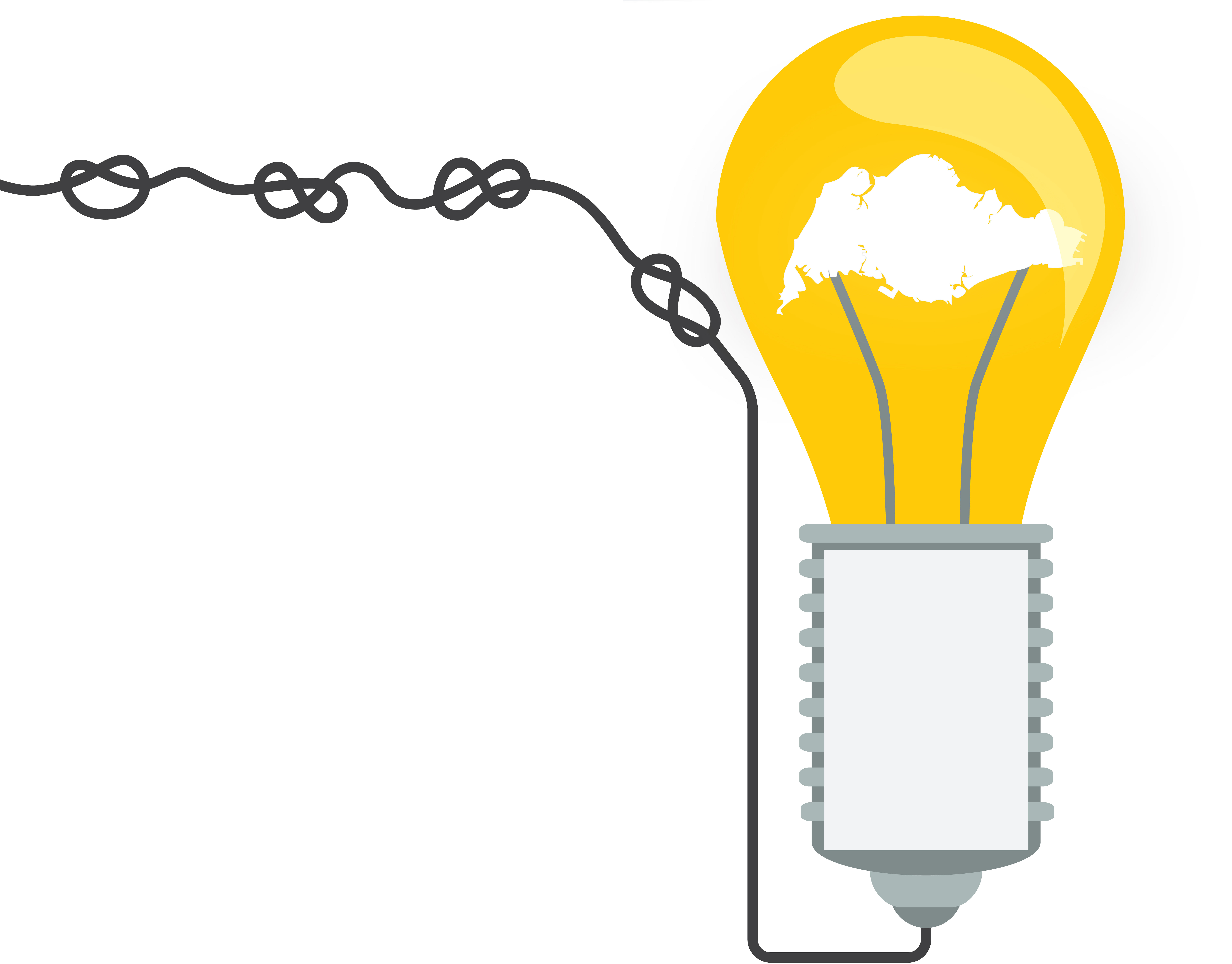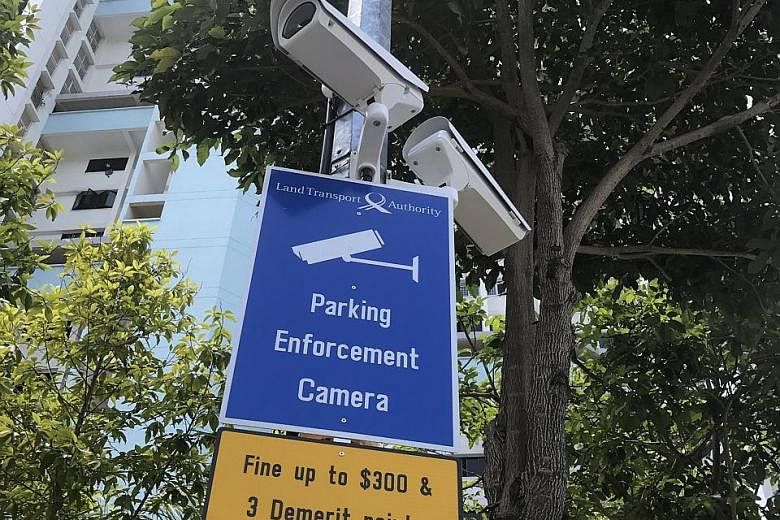Old folk putting towels over sensors meant to monitor their safety at home.
Better traffic flow and police security, through linking up surveillance cameras on every corner to a central, integrated database shared by the whole Government - still a pipe dream.
Bank tokens and payment cards cluttering up bags and wallets, so e-payments are not hassle-free.
This was hardly the outcome envisaged when Singapore's Smart Nation programme was launched in late 2014 to help the nation go digital.
The way forward would be systematic and coordinated, it was declared back then. There would be common infrastructure for sharing among government agencies to avoid duplication. The Smart Nation Programme Office (SNPO) was created to bring these plans to fruition.
Nearly three years later, the public-sector teams involved in the design and implementation of Smart Nation projects are being reorganised under changes announced last Monday to boost the delivery of tangible results.
The SNPO itself will now come under the new Smart Nation and Digital Government Office (SNDGO), which will also have technology teams from other agencies.
The changes come after Prime Minister Lee Hsien Loong lamented at the annual Camp Sequoia tech summit last month that Singapore was not moving as fast as it ought to on digital transformation.
"We have set up a Smart Nation Programme Office in the Government, in the Prime Minister's Office, to oversee this exercise and get significant projects moving. I think personally that for all our pushing, we really are not going as fast we ought to," he said.
He cited three major projects where he would like to see progress.
The first is an integrated national sensor network.
"Whether it is a traffic police network, or police cameras or the water authority cameras tracking drains or cameras in our housing estates watching lifts and security, you can pull all of the pictures together and get one integrated data source for the whole country," said PM Lee.
The second is a national digital identity system to supersede the existing SingPass authentication system for accessing both public and private-sector services.
"We have one for the government services, SingPass, but it really does not do all the things we need it to do and it does not extend to private- sector services. It does not even extend to hospitals which are restructured, semi-privatised," he said.
In contrast, he cited Estonia, which has a digital ID system that allows its citizens to access their bank and healthcare information, and even vote online. "The Estonians have this; there is no reason why we should not have it."
The third area is e-payments, with PM Lee saying Singapore has not gone as far as needed, to go cashless in hawker centres and shops, and between people.
UNPACKING SOME OF THE PROBLEMS
Within a 10m radius of Little India train station along Race Course Road are multiple surveillance cameras, each with its own design and power source. They belong either to the police or the Land Transport Authority to deter illegal parking, among other offences. Some cameras are at the entrance of the train station and existing lamp posts, while others are mounted on newly erected poles.
Meanwhile, the National Environment Agency has its own electronic eyes in hundreds of locations, including public housing estates, to catch litterbugs. National water agency PUB, too, has it own set of about 50 cameras and more than 200 sensors islandwide to track the drainage system.
But the web of cables that connect these existing cameras and sensors remains untapped as a central data resource - although the foundation for this is now taking shape.
The Government Technology Agency (GovTech) - the 1,800-strong team behind tech transformation in the public sector - is working with various agencies to develop a video analytics system, which could help detect potential unruly crowds or traffic congestion, among other things.
The video analytics system, slated for roll-out later this year, will ride on a larger shared communications backbone code-named Smart Nation Platform (SNP).
GovTech told Insight the SNP has so far been rolled out in pockets of high-traffic areas, including the Civic District and Orchard Road, and is able to carry data from video cameras and environmental sensors.
It looks like PM Lee's idea of an integrated data source for the whole country will take time to develop.
Experts say a lack of standardisation across agencies could have been in the way.
"We could have a scenario where many different types of incompatible cameras and surveillance software are (already in) use," said Mr Benjamin Low, Asia-Pacific vice-president of Danish provider of video surveillance software and systems Milestone Systems. "This then becomes a challenge for the different government sectors to (share) video feeds," he added.
EDUCATION, POLICY, BUSINESS-MODEL LACKING
Observers close to Smart Nation project implementations also point to a lack of education and policies to help people adopt digital initiatives.
Smart elder care was highlighted when the Smart Nation programme was launched.
Take the earlier example of the elderly not being comfortable with sensors that monitor them.
It was part of several smart-living trials for monitoring the safety of the elderly in their homes, including a trial in Yuhua.
In April last year, a trial started in Yuhua for 9,000 residents in nearly 3,200 flats to allow them to be the first in Singapore to experience "smart living" in a Housing Board estate. Sensors installed on doors would help monitor the well-being of the elderly by tracking, say, how often they go to the toilet or the period of inactivity. The elderly also have a mobile panic button to alert caregivers and family members.
However, Insight understands that installation took place in only about 50 homes.
In other projects, elderly people resisted the idea of "losing their privacy", resorting to covering the sensors with a towel.
"They also did not want to be seen as vulnerable and useless, clearly signalling the need for more education and marketing," said one observer close to such projects.
This is despite the sensors carrying no video feed and sensing only motion. This shows that even though initiatives are well-meaning, there is room for considering the human factor.
A separate joint research by Singapore Management University and India-based consultancy firm Tata Consultancy Services, dubbed SHINESeniors, aims to bridge the gap. It was launched in 2014 to study how healthcare of the future can be implemented, but gathered pace only recently. It aims to provide about 100 homes in Marine Parade and Bedok with activity-monitoring sensors by next month.
One observer noted that policy- makers can also play a part to drive adoption of digital resources by old folk. For example, they could provide the children of elderly people with income tax relief if they install such smart healthcare solutions in their homes.
A business case is also lacking, said the boss of a local firm involved in smart eldercare implementations here. "The best champions for smart eldercare solutions are the hospitals, but they are not doing the evangelising," he said.
"Hospitals know how to charge people when they come for treatment, but they do not know how to charge for tele-medicine." For instance, home-based healthcare using sensors could allow patients with chronic diseases to monitor their conditions and receive doctors' attention when needed. But how do doctors charge for consultation over the Internet?
UNCLEAR TARGETS, DEADLINES
Another observer, who has worked on other government projects, said that the objectives and deadlines for Smart Nation projects could have been unclear initially.
In Spain, for example, the smart city objective is very simple and clear: Move from fossil fuels to renewable energy with clear targets set for each year, he said.
"The benefits are very tangible. This is the right way," he said, noting that a one-year target for the first milestones of key projects in Singapore was made public only last week.
Last Monday, Minister-in-charge of the Smart Nation Initiative Vivian Balakrishnan made public a one-year timeline for "major progress" in three signature Smart Nation programmes: a national sensor system, digital identity and e-payments.
WHAT TO MAKE OF THE CHANGES
With such a tight deadline, it is timely that more firepower is given to speed things along.
From May 1, GovTech will come under the Prime Minister's Office (PMO) along with SNPO. GovTech is currently a statutory board under the Ministry of Communications and Information (MCI).
Technology planning teams from the Ministry of Finance and MCI will also come under the PMO, in a move which Deputy Prime Minister Teo Chee Hean said would allow the Government to be "more coordinated" on key digital projects and have "a greater ability to pull together all the government agencies".
A ministerial committee, chaired by DPM Teo and comprising four other ministers, will oversee Singapore's Smart Nation efforts from May.
Observers hope that oversight by the high-powered ministerial committee directly from the PMO would elevate the importance of inter- agency sharing and cooperation.
One can imagine the resistance government agencies had put up in the past. For instance, those with existing surveillance camera systems may not want to switch to another platform just for data to be shared. Agencies may also want to use their budget for other technology upgrades.
Tellingly, the media has observed inter-agency rivalry over who should be credited for which tech project.
Mr Clement Teo, principal analyst at market research firm Ovum, said: "It is understandable that different government agencies have different priorities and red tape to cut through."
Mr Teo noted that the handful of policy planners at SNPO might not have the same resources as GovTech to push the Smart Nation agenda throughout the public sector. "After all, GovTech, with its 1,800-strong team, has deep technical expertise," he said.
AT FULL THROTTLE
Now, the pressure is on to deliver.
Take digital identity, an area in which the PM said he would like to see progress. The Sunday Times understands that the digital ID could be in the form of a software-based security token. A trial is under way in the healthcare and banking sectors with digital security systems maker Gemalto.
On the e-payment front, a Central Addressing Scheme is slated for launch by the middle of the year to allow fund transfers to one's mobile number without having to ask for and enter the recipient's account number (see other report).
While it remains to be seen if the new enlarged Smart Nation group under the PMO can deliver on the key projects, some consultants are optimistic.
Senior partner at management consultancy firm McKinsey & Company Diaan-Yi Lin said the firm's experience in working with governments around the world shows that having a high-level, over-arching department to oversee digital initiatives is a key component of success.
Denmark's Agency for Digitisation and Estonia's E-Estonia Council are examples of similar moves.
The reorganisation under the PMO will "clarify and consolidate ownership", she said.
PM Lee reiterated last Friday that there is a lot of room for growth within the Government itself - specifically, how it develops and uses technology to serve the public - which explains the recent reorganisation.
"You must have the right degree of centralisation to be able to make things happen and coordinate tightly... that's why we brought it (GovTech) into PMO, and that will give it enough influence to work with all the other agencies and ministries," said PM Lee. "Otherwise, we are trying very hard but we are not as tightly coordinated as we could be and it's frustrating."
How Singapore has Smartened up its act
MYINFO
By June, Singaporeans and permanent residents opening bank accounts with OCBC, UOB, DBS and Standard Chartered will not need to key in details such as NRIC number and address, or submit physical documents to verify the data.
Instead, they can consent to having the details pulled digitally from MyInfo, a Government-backed digital vault of their personal data, launched in May last year.
Created by the Government Technology Agency (GovTech) and the Ministry of Finance, it pulls data - such as name, NRIC number and registered address - from seven public agencies.
Data in the consolidated repository - which has 100,000 citizen and PR sign-ups so far - can be used to automatically fill in digital forms required by some e-services, for instance, when you apply for or renew work permits for domestic helpers, and apply for public housing.
DATA.GOV.SG
This one-stop venue for a host of free government data sets now offers an intriguing new way to display graphs and charts - through animated visuals.
With these visuals, you can easily observe any correlation between, say, the annual age distribution of cars and carbon monoxide emission over 10 years.
MYRESPONDER
A joint initiative between GovTech and the Singapore Civil Defence Force, this smartphone app alerts users to medical emergency cases nearby. To date, myResponder has enlisted more than 10,000 volunteers to respond to emergency cases within 400m.

Street sensors that collect data
The Government Technology Agency (GovTech) is working with various unnamed agencies to develop a video analytics system to help detect anomalies to predict, say, potential unruly crowds or traffic congestion.
The video analytics system is slated for roll-out in the later part of this year. It will be part of a larger shared sensor and communications backbone code-named Smart Nation Platform (SNP). "The SNP is envisioned to help public agencies in the efficient running of the city, (including) urban planning and incident response," says a GovTech spokesman.
The larger SNP is being piloted with the Land Transport Authority, riding on the latter's network of street lights. The SNP will be used for carrying all sorts of data - from temperature to humidity - and could see 95,000 street lights islandwide become interconnected lamp posts.
The ayes for e-ID
Imagine being able to ditch multiple e-banking tokens with different banks, and doing away with the hassle of remembering different usernames and passwords.
That is what the mooted digital identity has the potential to do. Singapore's mobile digital ID will be similar to the kind of e-identity used in places such as Hong Kong, Estonia and Finland.
Estonia's digital ID system, for instance, allows its citizens to access their bank and healthcare information and even vote online.
In July last year, the Government Technology Agency engaged digital security systems maker Gemalto to trial a mobile digital system in the banking and healthcare sectors to securely identify every Internet user - just like a digital version of the NRIC, or identity card, in the physical world.
Insight understands that the digital ID to be rolled out here eventually could be in the form of a software-based security token. It is believed that a digital ID can better protect online identities as threats of fraud and identity theft mount.




